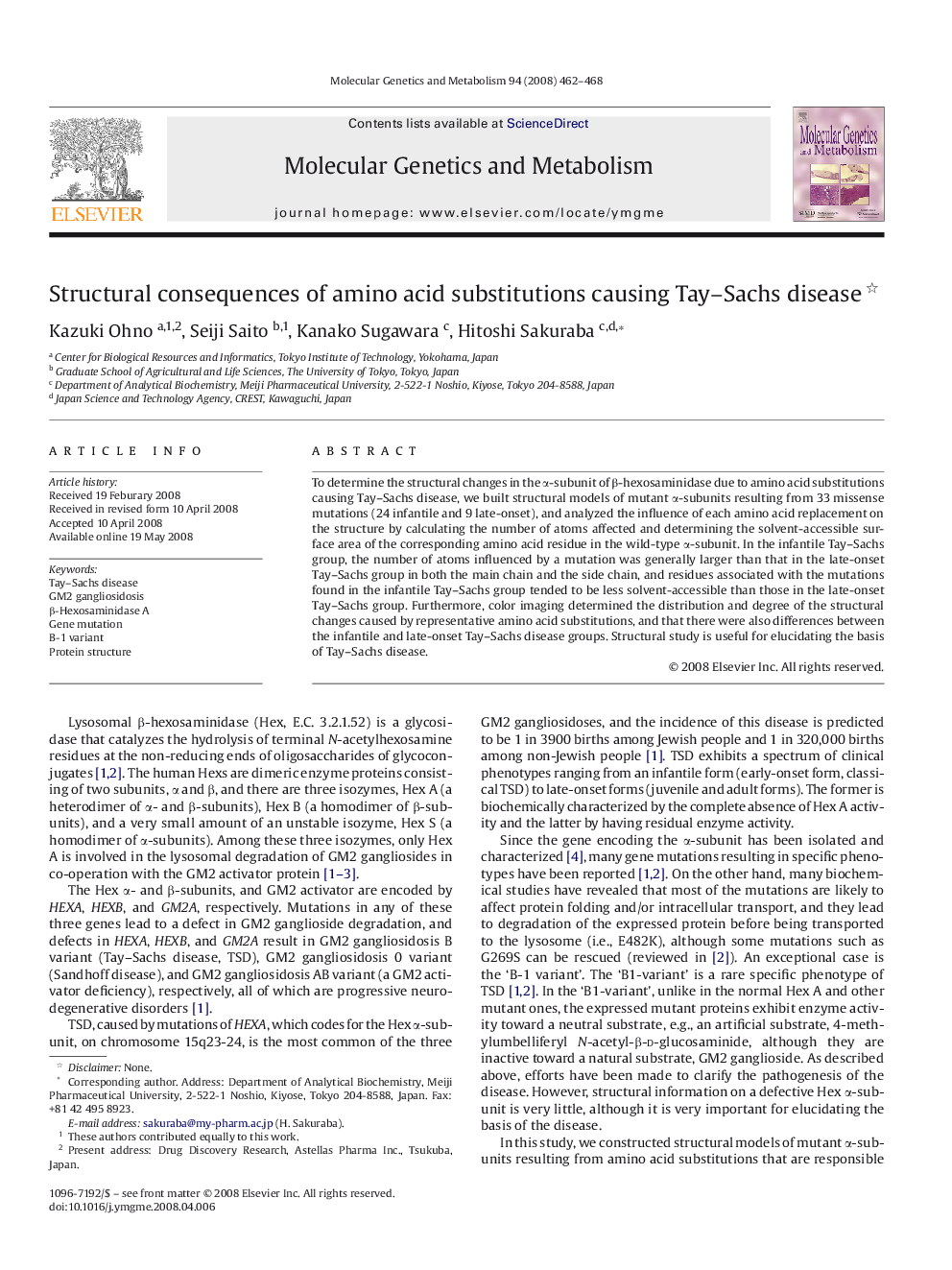| Article ID | Journal | Published Year | Pages | File Type |
|---|---|---|---|---|
| 1999202 | Molecular Genetics and Metabolism | 2008 | 7 Pages |
To determine the structural changes in the α-subunit of β-hexosaminidase due to amino acid substitutions causing Tay–Sachs disease, we built structural models of mutant α-subunits resulting from 33 missense mutations (24 infantile and 9 late-onset), and analyzed the influence of each amino acid replacement on the structure by calculating the number of atoms affected and determining the solvent-accessible surface area of the corresponding amino acid residue in the wild-type α-subunit. In the infantile Tay–Sachs group, the number of atoms influenced by a mutation was generally larger than that in the late-onset Tay–Sachs group in both the main chain and the side chain, and residues associated with the mutations found in the infantile Tay–Sachs group tended to be less solvent-accessible than those in the late-onset Tay–Sachs group. Furthermore, color imaging determined the distribution and degree of the structural changes caused by representative amino acid substitutions, and that there were also differences between the infantile and late-onset Tay–Sachs disease groups. Structural study is useful for elucidating the basis of Tay–Sachs disease.
